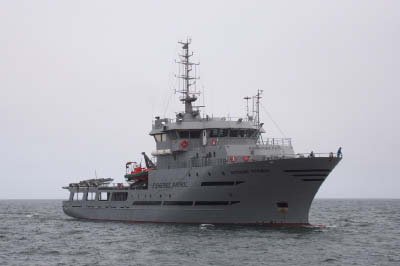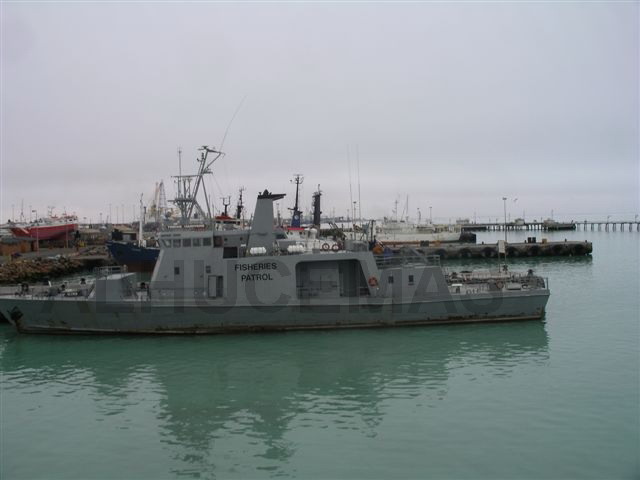 Реклама Google — средство выживания форумов :)
Реклама Google — средство выживания форумов :)
-
![[image]](https://www.balancer.ru/cache/sites/com/ph/photobucket/i762/albums/xx267/Jerrycan_photo/128x128-crop/IMG_1996AAA_zpscbccf0e5.jpg)
ВМС стран Африки
Теги:
А по ЮАР можно посмотреть на их сайте:


South African Navy Official Web Site
South African Navy on-line, the navy our people need. News and information about the SA Navy. // www.navy.mil.za
Прикреплённые файлы:
adv1971>>>>Африка большая, что конкретно надо?
Фагот> А можно состав ВМС Республики Конго? [»]

Ни Janes ни Combat fleets ничего не знают о существовании боевых кораблей и катеров у этой страны:-)
Файл неизвестного происхождения с моего компутера говорит
что "ВМС: 1 300 чел. Корабельного состава нет.____________"
ЦРУ сообщает что из этих 1300 человек - 600 это собственно экипажи кораблей, но количеста опять таки не дает, ограничиваясь словами "несколько" кораблей
Патрульные катера:
3 торпедных катера северокорейской постройки, со снятыми торпедными трубами
неясное количество малых патрульных катеров ( рейдовых можно сказать)
китайской постройки
два патрульных катера американской постройки
не менее 18 речных патрульных катеров французской постройки
Типы неизвестны.
Предположительно есть один катер испанской постройки ( P602 Les Trois Glorieuses - 138 тонн, 29 узлов)
adv1971>>>Ни Janes ни Combat fleets ничего не знают о существовании боевых кораблей и катеров у этой страны:-)
В моём Military Balance десятилетней давности есть такое по Республике Конго:
В моём Military Balance десятилетней давности есть такое по Республике Конго:
Прикреплённые файлы:
Из прошлогоднего МБ
Navy† ε800
BASE Pointe Noire
PATROL AND COASTAL COMBATANTS 3†
PATROL, INSHORE 3†
3 FSU Zhuk PFI< (all non-op) plus riverine boats
Navy† ε800
BASE Pointe Noire
PATROL AND COASTAL COMBATANTS 3†
PATROL, INSHORE 3†
3 FSU Zhuk PFI< (all non-op) plus riverine boats
adv1971>>>>Ни Janes ни Combat fleets ничего не знают о существовании боевых кораблей и катеров у этой страны:-)
Фагот> В моём Military Balance десятилетней давности есть такое по Республике Конго: [»]
Устарело, как я понимаю.
У них даже ВМБ уже другая.
Основные ВМБ - Banana, Matadi, Kinshasa и Kalemie на озере Tanganyika
Фагот> В моём Military Balance десятилетней давности есть такое по Республике Конго: [»]
Устарело, как я понимаю.
У них даже ВМБ уже другая.
Основные ВМБ - Banana, Matadi, Kinshasa и Kalemie на озере Tanganyika
Прикреплённые файлы:
NAVY,Democratic Republic of Congo
Date Posted: 19-Feb-2004
Jane's Sentinel Security Assessment - Central Africa
NAVY
NAVY SUMMARY
Assessment
Chain of Command
Organisation
Role and Deployment
UN Contributions
Training
Navy Bases
Inventory: Surface Fleet
NAVY SUMMARY TOP
STRENGTH
1,000 (2003 estimate)
Assessment TOP
The navy is considered to be in a state of near total disarray. Nevertheless, riverine operations are critical for the DRC due to the country's extensive system of navigable rivers and poor roads. Indeed, the importance of river transport led the government to withdraw all such vessels from the east of the country ahead of the rebel and foreign armies advance in 1998.
The most often used vessels are civilian or merchant river barges that have been converted to military use. These vessels are often armoured and may have machine guns and other heavy weapons mounted upon them. Their most notable actions during the war included the successful relief of Ikela (in association with Zimbabwean special forces) in January 2000, and the disastrous defeat near Libenge on the Ubangi river in August 2000. In the later action an ambush by the rebel Movement for the Liberation of Congo (Mouvement de libération du Congo : MLC) sank one troop carrying barge, and disabled two others. Newspaper accounts reported that some 700 Congolese troops died in the battle, which marked the high point of the government's mid-2000 offensive in Equateur Province.
Zimbabwe Special Forces are thought to have initially trained with Congo's Lake Command in 1998, enabling many covert missions to occur on Lake Tanganyika in the early stages of the war. Again, it is unclear if Congolese boats or reported but unconfirmed United States supplied/sourced Raiders were used by the Zimbabweans in these missions. Late 2000 reports revealed that a shipment of Zimbabwean manufactured patrol boats were delivered to the Kinshasa-allied Burundian Forces for the Defence of Democracy (Forces pour la defense de démocratie : FDD) by way of Zambian ports on southern lake Tanganyika. Subsequently, a Congolese and Zimbabwean offensive aiming to reopen a corridor to Lake Tanganyika failed in November 2000.
Chain of Command TOP
Under the mid-2003 re-organisation of the armed forces, command of the navy was allocated to the former rebel group, the MLC. Chief of the Navy Major-General Dieudonné Amuli Bahigwa was duly appointed in September 2003. His predecessor under the Kabilas, Lieutenant-General Liwanga Maata Nyamunyobo, became armed forces chief of staff at this time. The position of Deputy Chief of Staff of the Navy was to be appointed by the RCD-Goma.
Chain of Command
Organisation TOP
All of the 1,000 personnel are believed to be volunteers; of these, 70 are officers and up to 600 are marines.
The Navy was placed under army command by the new government in 1997 but its independence was re-established under the military unification and restructuring plan of 2003. Coastal command is located at Matadi, riverine command at Kinshasa and lake command at Kalémié on Lake Tanganyika. The latter was under rebel control from late-1998.
Role and Deployment TOP
There are three commands: Coastal, Riverine, and Lake. With the informal nature of the fleet since the late 1990s, it is unclear how the few remaining vessels have been allocated between bases and commands.
There are believed to be a few Chinese supplied coast launched HY-2 Silkworm surface to surface missiles, almost certainly non-operational.
UN Contributions TOP
The navy has made no contributions to UN operations. Revised MONUC deployment plans from February 2001 emphasised the importance of safe transit along the DRC's rivers and lakes for Congolese security by specifying that a 400 strong unit of peacekeepers be delegated for waterborne patrol. Some 240 members of the Uruguayan Navy were subsequently deployed with patrol boat to re-open the River Congo.
Training TOP
Retraining of the Navy is likely to occur alongside the restructuring and training of the unified national armed forces, although it will be of low priority compared to the ground forces. Given the extended period of naval activity, the lack of boats and dearth of expertise by any armed faction in naval operations, the Navy is likely to require virtual recreation from base level.
Navy Bases TOP
Theoretically, naval bases are located at:
Boma
Kinshasa (Riverine HQ)
Matadi (Coastal HQ)
The following two bases on Lake Tanganyika were under the control of the RCD-Goma from 1998/99:
Kalémié (former Lake HQ)
Moba
Under these conditions, the Kinshasa government maintained access to Lake Tanganyika only via its FDD garrisoned enclave at Moliro on the Zambian border, which was used to launch infiltration vessels up the lake to Burundi and rebel-occupied South Kivu province.
Navy Bases
Inventory: Surface Fleet TOP
Most operations in the Congolese conflict have involved unclassified civilian vessels improvised to serve as attack craft or river transports. These are not listed in the navy's official inventory.
Type
Role
Quantity
Delivered
Shanghai II Class (136 tons)
Fast Patrol/Attack Craft
n/a
1976-1987
Note:
First four delivered from China in 1976-78. All were thought to be beyond repair by 1985 but two of the four were patched up, two replacements were delivered in February 1987 and one more has been recovered since then. New radar and communications fitted in 1990. P 101 sunk at moorings in mid-1990. No lake patrols were reported after the 1997 Kabila victory. One of these craft reported captured by rebels in 1998 and another two were reported deleted the same year. Any remaining vessels were inoperable by 2000 and are unlikely to be revived in the future.
adv1971>> Африка большая, что конкретно надо?
adv1971>> Фотографий у меня нет, но списочный состав могу написать. [»]
руслан> Если можно списочный состав ВМС АНГОЛЫ , МОЗАМБИКА , КОНГО, ТАНЗАНИИ И ДР. [»]
По Анголе:
Janes утверждает, что на 2003 год в составе ВМС исправных кораблей не было. При этом численность л/с около 900 человек.
Другие парни говорят что имеется:
4 патрульных катера типа Mandume - P100 Mandume, P102 Polar,
P104 Atlantico, P106 Golfinho - катера испанской постройки, 104 т, 25 узлов, постройки 1993 года (первое фото)
3 патрульных катера типа Patrulheiro - Patrulheiro, Preservador, Temerario - французской постройки 1993 года (второе фото)
adv1971>> Фотографий у меня нет, но списочный состав могу написать. [»]
руслан> Если можно списочный состав ВМС АНГОЛЫ , МОЗАМБИКА , КОНГО, ТАНЗАНИИ И ДР. [»]
По Анголе:
Janes утверждает, что на 2003 год в составе ВМС исправных кораблей не было. При этом численность л/с около 900 человек.
Другие парни говорят что имеется:
4 патрульных катера типа Mandume - P100 Mandume, P102 Polar,
P104 Atlantico, P106 Golfinho - катера испанской постройки, 104 т, 25 узлов, постройки 1993 года (первое фото)
3 патрульных катера типа Patrulheiro - Patrulheiro, Preservador, Temerario - французской постройки 1993 года (второе фото)
руслан
новичок
adv1971>>> Африка большая, что конкретно надо?
adv1971> adv1971>> Фотографий у меня нет, но списочный состав могу написать. [»]
руслан>> Если можно списочный состав ВМС АНГОЛЫ , МОЗАМБИКА , КОНГО, ТАНЗАНИИ И ДР. [»]
adv1971> По Анголе:
adv1971> Janes утверждает, что на 2003 год в составе ВМС исправных кораблей не было. При этом численность л/с около 900 человек.
adv1971> Другие парни говорят что имеется:
adv1971> 4 патрульных катера типа Mandume - P100 Mandume, P102 Polar,
adv1971> P104 Atlantico, P106 Golfinho - катера испанской постройки, 104 т, 25 узлов, постройки 1993 года (первое фото)
adv1971> 3 патрульных катера типа Patrulheiro - Patrulheiro, Preservador, Temerario - французской постройки 1993 года (второе фото) [»]
СПАСИБО . БЛАГОДАРЯ ВАМ ВМЕСТЕ СДВИНЕМ ТУПИК В ИНФОРМАЦИИ ПО ВМС АФРИКИ.ОНИ ЕСТЬ И НЕПЛОХО РАЗВИВАЮТСЯ , ДАЖЕ ЛУЧШЕ ЧЕМ В СНГ.
ЕСЛИ ЕСТЬ КАКИЕ-ЛИБО ФОТО ВЫКЛАДЫВАЙТЕ У МЕНЯ ФОТОИНФОРМАЦИЯ ПО ВМС 15 АФРИКАНСКИХ СТРАН.
ПО АНГОЛЕ - P-102 POLAR И P-104 И НЕИЗВЕСТНЫЕ.
СПАСИБО JANES
adv1971> adv1971>> Фотографий у меня нет, но списочный состав могу написать. [»]
руслан>> Если можно списочный состав ВМС АНГОЛЫ , МОЗАМБИКА , КОНГО, ТАНЗАНИИ И ДР. [»]
adv1971> По Анголе:
adv1971> Janes утверждает, что на 2003 год в составе ВМС исправных кораблей не было. При этом численность л/с около 900 человек.
adv1971> Другие парни говорят что имеется:
adv1971> 4 патрульных катера типа Mandume - P100 Mandume, P102 Polar,
adv1971> P104 Atlantico, P106 Golfinho - катера испанской постройки, 104 т, 25 узлов, постройки 1993 года (первое фото)
adv1971> 3 патрульных катера типа Patrulheiro - Patrulheiro, Preservador, Temerario - французской постройки 1993 года (второе фото) [»]
СПАСИБО . БЛАГОДАРЯ ВАМ ВМЕСТЕ СДВИНЕМ ТУПИК В ИНФОРМАЦИИ ПО ВМС АФРИКИ.ОНИ ЕСТЬ И НЕПЛОХО РАЗВИВАЮТСЯ , ДАЖЕ ЛУЧШЕ ЧЕМ В СНГ.
ЕСЛИ ЕСТЬ КАКИЕ-ЛИБО ФОТО ВЫКЛАДЫВАЙТЕ У МЕНЯ ФОТОИНФОРМАЦИЯ ПО ВМС 15 АФРИКАНСКИХ СТРАН.
ПО АНГОЛЕ - P-102 POLAR И P-104 И НЕИЗВЕСТНЫЕ.
СПАСИБО JANES
Прикреплённые файлы:
По Танзании:
Численность ВМС около 1000 человек.
Основные базы - Дар-Эс-Салам, Занзибар (база береговой охраны),
пункты базирования Mtwara и Mwanza на озере Виктория и Kigoma на озере Танганьика
2 китайских патрульных катера типа Шанхай-2 -
P 68 Mzizi (ex-JW 9867)
P 69 Mzia (ex-JW 9868)
2 китайских торпедных катера типа Хучуань -
P 43 (ex-JW 9843)
P 44 (ex-JW 9844)
1 патрульный катер югославской постройки типа Type 16
2 китайских десантных катера типа Yuchin -
L 08 Pono
L 09 Kibua
В департаменте береговой охраны два патрульных катера типа Воспер-75
Также имеется мобильная ( понимайте как хотите
 ) батарея береговой обороны - орудия калибра 85-мм.
) батарея береговой обороны - орудия калибра 85-мм.руслан
новичок
adv1971> По Танзании:
adv1971> Численность ВМС около 1000 человек.
adv1971> Основные базы - Дар-Эс-Салам, Занзибар (база береговой охраны),
adv1971> пункты базирования Mtwara и Mwanza на озере Виктория и Kigoma на озере Танганьика
adv1971> 2 китайских патрульных катера типа Шанхай-2 -
adv1971> P 68 Mzizi (ex-JW 9867)
adv1971> P 69 Mzia (ex-JW 9868)
adv1971> 2 китайских торпедных катера типа Хучуань -
adv1971> P 43 (ex-JW 9843)
adv1971> P 44 (ex-JW 9844)
adv1971> 1 патрульный катер югославской постройки типа Type 16
adv1971> 2 китайских десантных катера типа Yuchin -
adv1971> L 08 Pono
adv1971> L 09 Kibua
adv1971> В департаменте береговой охраны два патрульных катера типа Воспер-75
adv1971> Также имеется мобильная ( понимайте как хотите ) батарея береговой обороны - орудия калибра 85-мм. [»]
) батарея береговой обороны - орудия калибра 85-мм. [»]
СПАСИБО . ТУТ НА 1 ФОТО ВИДНО 4 КИТАЙСКИХ ПАТРУЛЬНЫХ КАТЕРА ТИПА ШАНХАЙ-2.
2 ФОТО КИТАЙСКИЙ ДЕСАНТНЫЙ КАТЕР - L-08 PONO
adv1971> Численность ВМС около 1000 человек.
adv1971> Основные базы - Дар-Эс-Салам, Занзибар (база береговой охраны),
adv1971> пункты базирования Mtwara и Mwanza на озере Виктория и Kigoma на озере Танганьика
adv1971> 2 китайских патрульных катера типа Шанхай-2 -
adv1971> P 68 Mzizi (ex-JW 9867)
adv1971> P 69 Mzia (ex-JW 9868)
adv1971> 2 китайских торпедных катера типа Хучуань -
adv1971> P 43 (ex-JW 9843)
adv1971> P 44 (ex-JW 9844)
adv1971> 1 патрульный катер югославской постройки типа Type 16
adv1971> 2 китайских десантных катера типа Yuchin -
adv1971> L 08 Pono
adv1971> L 09 Kibua
adv1971> В департаменте береговой охраны два патрульных катера типа Воспер-75
adv1971> Также имеется мобильная ( понимайте как хотите
 ) батарея береговой обороны - орудия калибра 85-мм. [»]
) батарея береговой обороны - орудия калибра 85-мм. [»]СПАСИБО . ТУТ НА 1 ФОТО ВИДНО 4 КИТАЙСКИХ ПАТРУЛЬНЫХ КАТЕРА ТИПА ШАНХАЙ-2.
2 ФОТО КИТАЙСКИЙ ДЕСАНТНЫЙ КАТЕР - L-08 PONO
Д Дмитриев
втянувшийся
Года 3 назад на Рижском СРЗ построен сторожевик рыбоохраны для Намибии.Присутствовал при спуске на воде.Должен быть в строю уже.Окончательная достройка где-то в Норвегии кажется.Большая вертолетная площадка на корме.
Прикреплённые файлы:
Д Дмитриев
втянувшийся
Фагот> Д Дмитриев
Фагот> Довольно крупный по меркам африканских ВМС корабль. [»]Возможно он не ВМС принадлежит.Название NATHANIEL MAXWILILI
Фагот> Довольно крупный по меркам африканских ВМС корабль. [»]Возможно он не ВМС принадлежит.Название NATHANIEL MAXWILILI
Д.Дмитриев>>>>Возможно он не ВМС принадлежит.Название NATHANIEL MAXWILILI
Фагот> А он с вооружением, или без? [»]
Предположительно есть один пулемет.
Постройку финансировали кажется Норвеги по какой-то программе экологического мониторинга ( что-то такое, точно не знаю).
У самой Намибии на такой корабль купилки не хватит.
Фагот> А он с вооружением, или без? [»]
Предположительно есть один пулемет.

Постройку финансировали кажется Норвеги по какой-то программе экологического мониторинга ( что-то такое, точно не знаю).
У самой Намибии на такой корабль купилки не хватит.
Фагот> Д Дмитриев
Фагот> Довольно крупный по меркам африканских ВМС корабль. [»]
1400 т. В итоге он приобрёл вот такой вид:
Фагот> Довольно крупный по меркам африканских ВМС корабль. [»]
1400 т. В итоге он приобрёл вот такой вид:
Прикреплённые файлы:
руслан
новичок
Фагот>> Д Дмитриев
Фагот>> Довольно крупный по меркам африканских ВМС корабль. [»]
Алексей> 1400 т. В итоге он приобрёл вот такой вид: [»]
По Намибии - патрульный катер Министерства охраны рыболовства Намибии
типа Osprey.
Водоизмещение-320 т.
Размеры-49х10х3
Скорость -18уз.
Вооружение-1 12,7 мм пулемет.
Фагот>> Довольно крупный по меркам африканских ВМС корабль. [»]
Алексей> 1400 т. В итоге он приобрёл вот такой вид: [»]
По Намибии - патрульный катер Министерства охраны рыболовства Намибии
типа Osprey.
Водоизмещение-320 т.
Размеры-49х10х3
Скорость -18уз.
Вооружение-1 12,7 мм пулемет.
Прикреплённые файлы:
 Реклама Google — средство выживания форумов :)
Реклама Google — средство выживания форумов :)
Всё так, только на Вашей фотке Tobias Hainyeko.
Обратите внимание на здоровый полубак на фото госп.Дмитриева.
Обратите внимание на здоровый полубак на фото госп.Дмитриева.
Прикреплённые файлы:
Это сообщение редактировалось 25.10.2005 в 17:01
Copyright © Balancer 1997..2024
Создано 22.10.2005
Связь с владельцами и администрацией сайта: anonisimov@gmail.com, rwasp1957@yandex.ru и admin@balancer.ru.
Создано 22.10.2005
Связь с владельцами и администрацией сайта: anonisimov@gmail.com, rwasp1957@yandex.ru и admin@balancer.ru.
 руслан
руслан


 инфо
инфо инструменты
инструменты adv1971
adv1971
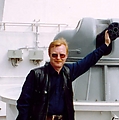

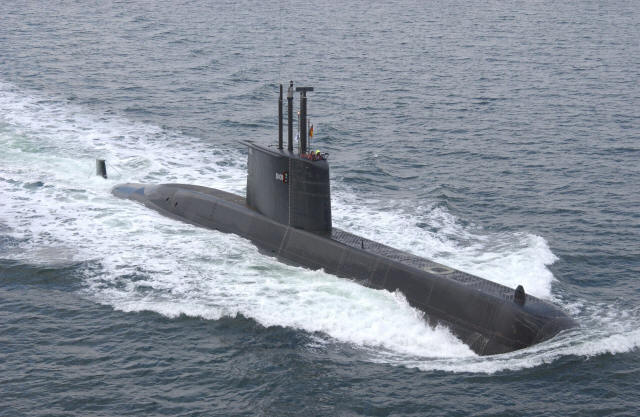
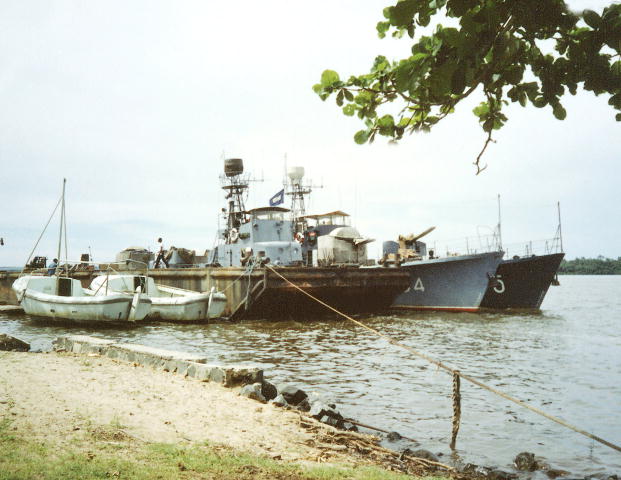


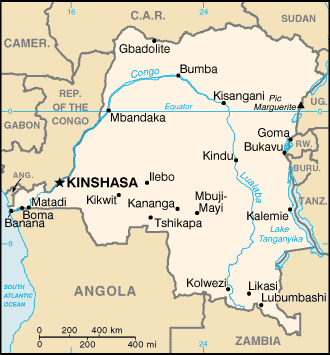
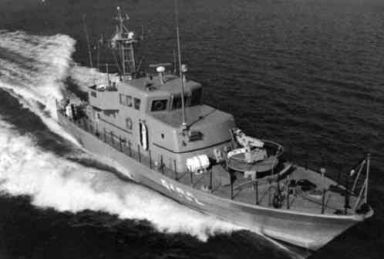







 Д Дмитриев
Д Дмитриев


 adv1971
adv1971

